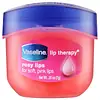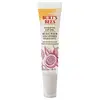What's inside
What's inside
 Key Ingredients
Key Ingredients

No key ingredients
 Benefits
Benefits

No benefits
 Concerns
Concerns

No concerns
 Ingredients Side-by-side
Ingredients Side-by-side

Capryloyl Glycerin/Sebacic Acid Copolymer
Skin ConditioningRicinus Communis Seed Oil
MaskingHelianthus Annuus Seed Oil
EmollientC13-15 Alkane
SolventCera Alba
EmollientLimnanthes Alba Seed Oil
Skin ConditioningCocos Nucifera Oil
MaskingAroma
Silica
AbrasivePassiflora Edulis Seed Oil
EmollientButyrospermum Parkii Butter
Skin ConditioningTocopherol
AntioxidantCitric Acid
BufferingGlyceryl Behenate
EmollientCitral
PerfumingHexyl Cinnamal
PerfumingHydroxycitronellal
PerfumingLimonene
PerfumingCapryloyl Glycerin/Sebacic Acid Copolymer, Ricinus Communis Seed Oil, Helianthus Annuus Seed Oil, C13-15 Alkane, Cera Alba, Limnanthes Alba Seed Oil, Cocos Nucifera Oil, Aroma, Silica, Passiflora Edulis Seed Oil, Butyrospermum Parkii Butter, Tocopherol, Citric Acid, Glyceryl Behenate, Citral, Hexyl Cinnamal, Hydroxycitronellal, Limonene
 Reviews
Reviews

Ingredients Explained
These ingredients are found in both products.
Ingredients higher up in an ingredient list are typically present in a larger amount.
Aroma refers to an ingredient, or mixture of ingredients, that impart or mask a flavor.
The name is slightly confusing. This is because INCI associates aroma with flavor instead of smell.
Here is the official definition from the The International Cosmetic Ingredient Dictionary and Handbook:
“Aroma is a term for ingredient labeling used to identify that a product contains a material or combination of materials normally added to a cosmetic to produce or to mask a particular flavor.”
INCI shows the only purpose of aroma to be "flavouring".
However, due to regulation differences, some companies may use aroma in place of parfum.
In Canada, this ingredient only has to be listed in concentrations above 1%.
Learn more about Aroma